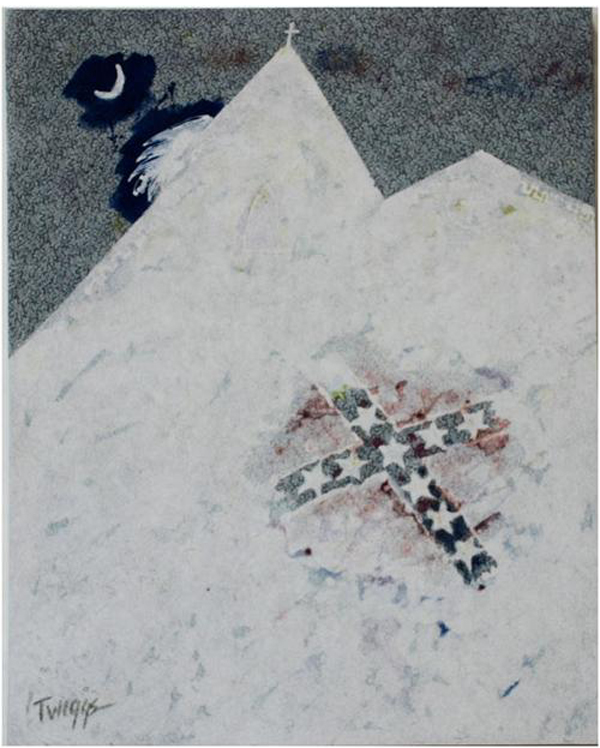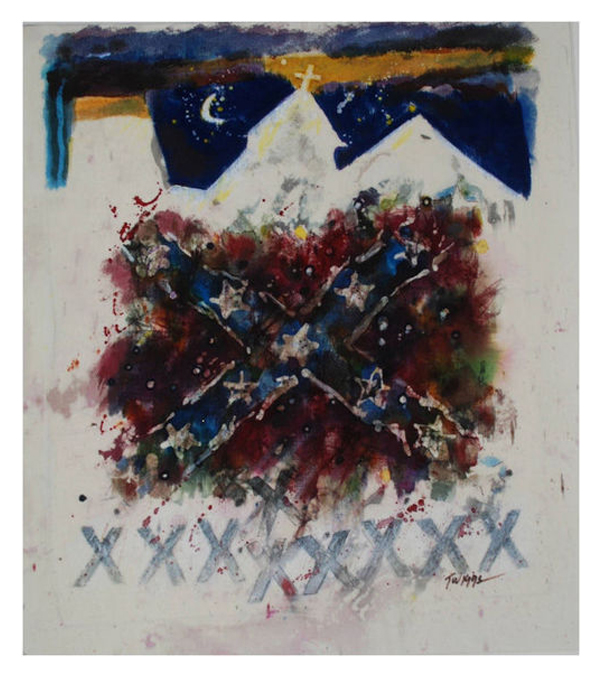This Sunday marks the third anniversary of the racially-motivated murders of nine parishioners at the Emanuel African Methodist Episcopal church in Charleston. This horrific event inflicted a pain that reverberated well beyond our state’s borders. It also awakened an awareness of our shared humanity. Led by the tremendous faith and grace demonstrated by the victims’ families and AME church members, Charlestonians unified, and set a path for healing that continues today.

Art has played a large role in the healing process. Hundreds of paintings, drawings, and other visual expressions were left as tributes and memorials in front of the church in the months following the tragedy. Artists found solace in the act of creating, and exhibitions were organized to support people’s need for contemplation and dialogue, including the Gibbes’ acclaimed exhibition, The Things We Carry.
Within weeks of the shooting, South Carolina’s renowned batik artist, Dr. Leo Twiggs, began creating art to process the profound pain he experienced in response to the event but also his feelings of hope as he witnessed a unifying response. In 2016, he completed a series of nine batik paintings entitled Requiem for Mother Emanuel that honors the nine men and women who perished. Painting by painting, Twiggs’ series captures the progression of emotions from terror and pain, to grace and unity that surrounded the tragic event. Twiggs says his series of paintings are a testimony to the nine who were slain but explains that the works also represent “the one shining moment people came together not because of the color of their skin but because of the humanness in their heart.”

Over the last two years the Requiem for Mother Emanuel series, which was first displayed at the City Gallery at Waterfont Park in Charleston in June 2016, has traveled to six different museums in three states (Alabama, North Carolina, and South Carolina). Now that the exhibition has closed, two of the salient works from the series are now on view at the Gibbes. Thanks to John and Kay Bachmann who donated who donated Requiem for Mother Emanuel #3 to the Gibbes permanent collection last January, and Hugh T. Scogin, Jr., who placed Requiem for Mother Emanuel #5 on loan to the Museum, visitors can take time to remember and reflect this Sunday, and for years to come on what Dr. Twiggs calls “our state’s greatest moment…a response that moved us from tragedy to redemption.”
—Sara Arnold, Curator of Collections, Gibbes Museum of Art
Top Image: Requiem for Mother Emanuel #5 (detail), 2016, by Leo Twiggs (American, b. 1934), Batik, 24 x 30 inches; On loan courtesy of Hugh T. Scogin, Jr.
Published June 14, 2017
Watch a short video of Dr. Leo Twiggs speaking about the process and his intention for the Requiem for Mother Emanuel series:

